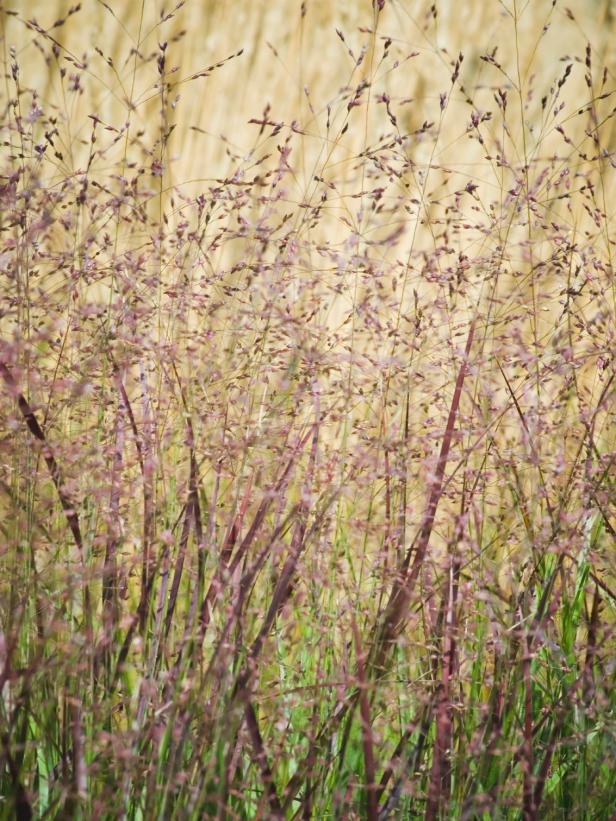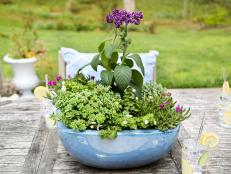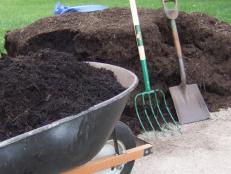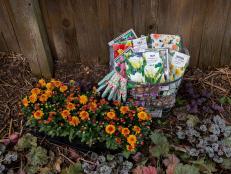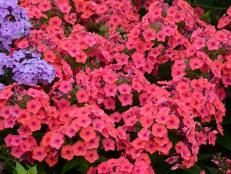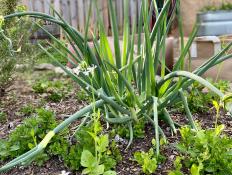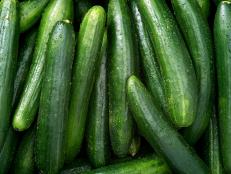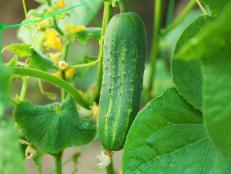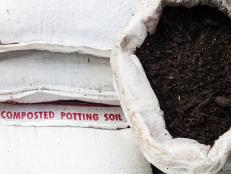Perennials Span the Seasons
After battling too much rain, not enough rain, heat, chill, insects, diseases and general attrition, it's hard to think about how to make the August garden look good, much less plan for fall. In September, one has to stifle the impulse to run to the local garden center and load up on pansies, mums, kales and cabbages. This only leads to a bad case of pansiosa and mumitus, and doesn't cure what ails a tired garden. What you need are some bold and beautiful perennials to perk up the last of summer and the beginning of fall. Some of these bloom now, while the rest are something you can look forward to.
Branched Bugbane
Cimicfuga ramosa, 'Hillside Black Beauty'
With lacy, dark purple foliage and fluffy, fragrant white plumes in late summer to early fall, this 3- to 4-foot beauty is a totally awesome plant for the shade garden. It holds its beautiful purple leaves only in light to medium shade. You can grow this plant in a sunnier location if you have very moisture-retentive soil, but be prepared for the leaves to start turning green. USDA Zones 3 to 7.
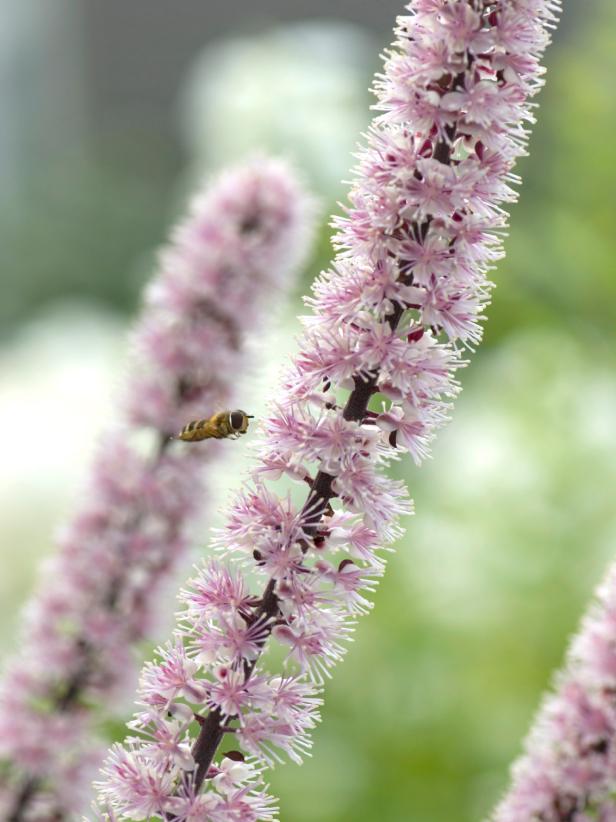
Selected Daylilies
Certain Hemerocallis hybrids
Most daylilies are midseason bloomers and that makes the late bloomers special. Here are some late daylilies that I wouldn't go without:
'Heirloom Heaven.' This one is hot red with a yellow eye on a 2-foot stem. The shorter varieties of daylilies are good for holding a bank.
'Autumn Minaret.' This beauty blooms over a long period in the late season. A beautiful, tall daylily for the back of the border, this is a cheerful golden yellow that tops in at four to six feet.
'The Jury Is Out.' A spidery-shaped yellow daylily, this one has a high bud count and good branching. At three feet tall, that equates to lots of blooms.
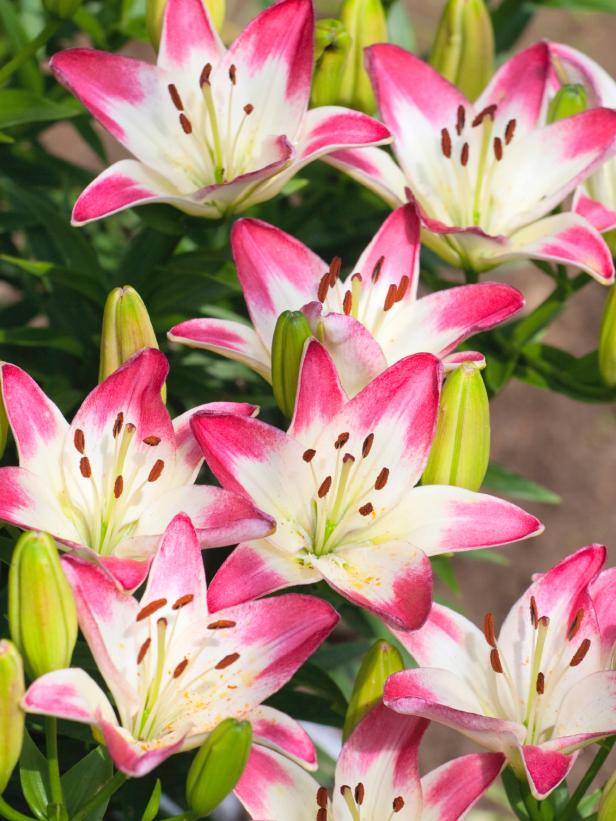
Stonecrop or Sedum
Everyone loves 'Autumn Joy,' but the flower heads get so heavy when in full bloom that the plant develops a bad case of the sprawls. If you cut back in June you will have shorter, well-branched plants with a slightly smaller flower head. If you can't remember to cut back, try 'Autumn Fire,' a knockoff lookalike. The big difference is this one manages to stand up straight. The buds are whitish-pink, turning to a darker pink as they open, and they mature to a bronzy red. This is a plant you can leave in the garden for winter interest. Just cut dried stalks in spring. Sedums are very easy to grow: They grow in full sun, average soil and are very heat and drought tolerant. The leaves are succulent, which is why it withstands hot, dry weather so well. Hardy in USDA Zones 3 to 8. Sedums are great combined with ornamental grasses.
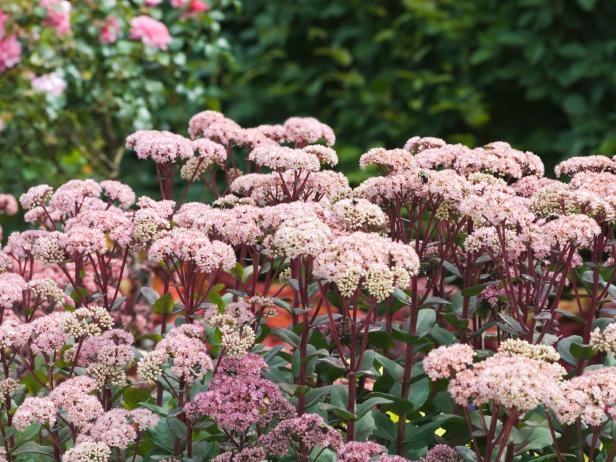
Leadwort or Plumbago
Ceratastigma plumbaginoides
Not many groundcovers flower in fall, but this is one that never ceases to delight gardeners. This late-summer and early fall-blooming perennial is only a foot tall. The showy little flowers are bright blue, a rare color in the early fall. And as if that weren't enough, the leaves turn a bronzy red in early fall. This is when this plant really shines, as it echoes the trees and shrubs that are also turning the same colors. Remember, this is not an evergreen ground cover; it dies back in the fall, but don't let that stop you. It will grow in full sun to light shade; think of shade if your climate is really hot. USDA and grows in Zones 5 to 8.
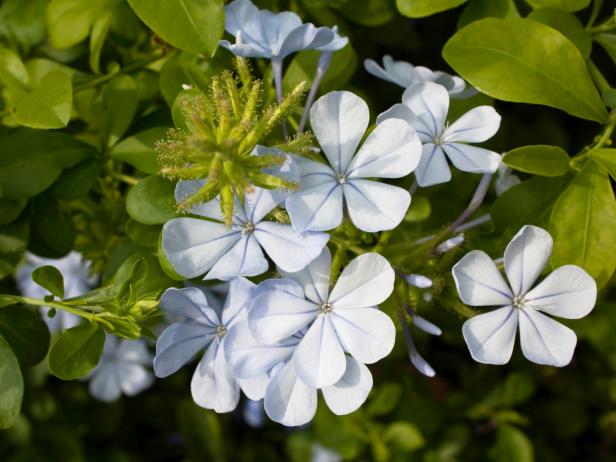
Japanese Onion
Allium thunbergii
For those of you with just a little blank space, the Japanese onion is a very short, neat plant. The only cultivar being sold is 'Ozawa.' Ornamental onions have slender straplike leaves with lovely, chivelike and mauvy blossoms. It flowers in September and is a foot tall. For good garden performance in Zones 5 to 8, plant in full-sun, average garden soil with good drainage. The foliage stays fresh from spring to fall. Sometimes the Japanese onion can flower until the frost.
Toad-Lily
Tricytis macropoda
There are never enough shade-flowering plants late in the season, and toad-lilies can be showstoppers, often resembling exquisite miniature orchids. 'Sinonome' bears handsome white flowers with purple flecks for as long as four to six weeks on a 2- to 3-foot plant. The upright foliage is dramatic and handsome. The plants are stoloniferous but are not particularly invasive. Give them light to partial shade and moisture-loving soil. Plant them along a walkway where you can easily enjoy these unusual flowers. Hardy in USDA Zones 5 to 8.
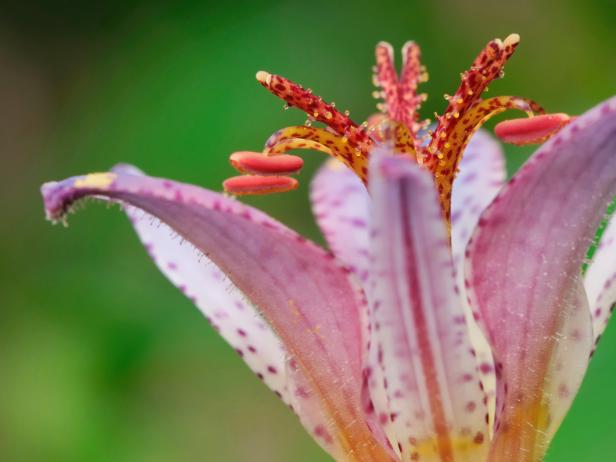
Ornamental Grass
There is no true fall finale without an ornamental grass. In the fall, the spikes sway in the wind and give movement in the garden. If you get the sun in late day shining through both plumes and blades, you have a picture-perfect late ending. Late-blooming grasses provide structure in the winter garden and so are cut back in early spring. One of my favorites is switch grass (Panicum virgatum). To have this grass grow well, plant it in full sun with average soil. If you want a grass that has striking color even before fall arrives, you need 'Heavy Metal.' It has shimmering metallic-blue leaves and a compact, erect shape. The airy and feathery plumes emerge in fall as the plant grows to four to five feet. As the season progresses, the blue turns to amber and then to beige as winter sets in. This is a true American beauty that, when planted in mass, produces amber waves of grass. All grasses go well with late asters, sedums and the last blooms of garden phlox.
